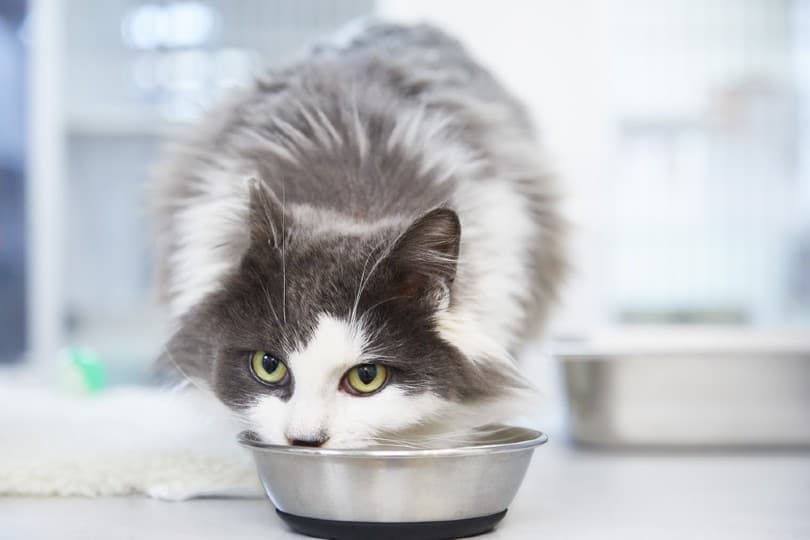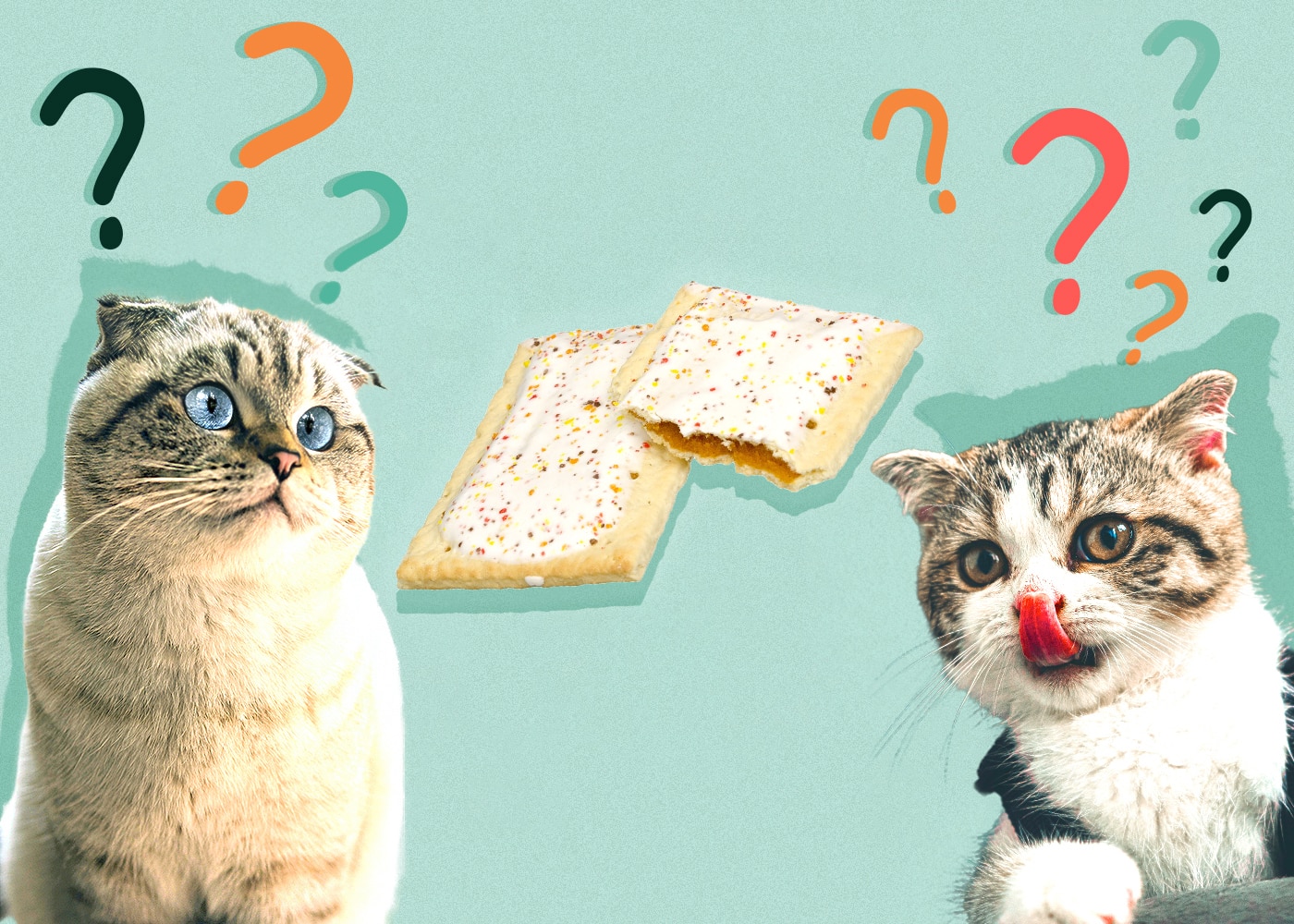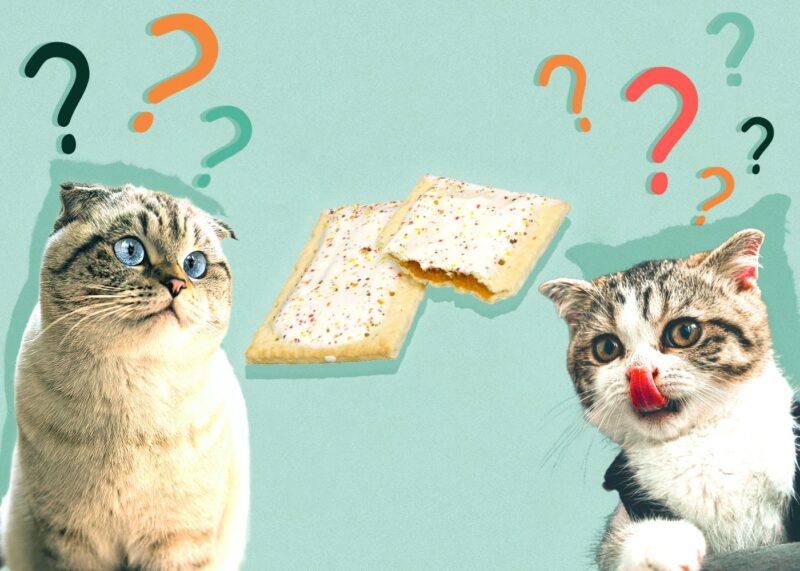“Curiosity killed the cat” is a phrase that couldn’t be truer about some cats. It seems like you can’t leave them alone for more than a minute before they’re face first in something they’re not supposed to touch. The good news is that a PopTart will not harm your cat unless it contains chocolate or other toxic ingredients.
However, PopTarts are far from healthy; even humans shouldn’t be snacking on these foil-wrapped pastries too often. Here’s what you need to know about PopTarts and cats (that’s got to be a brand-new sentence…)

Cat Nutrition: What Foods Are Healthy for Cats?

To understand why cats shouldn’t be eating PopTarts, we first have to understand what a healthy diet for cats looks like. Cats are what scientists call “obligate carnivores.” This term means that cats’ bodies are biologically designed to break down animal proteins, and they have a distinct lack of morphology related to the digestion of plant materials.
For instance, the caecum is the part of the body that we generally associate with the digestion of plant materials. In herbivores and omnivores, this part of the intestinal tract is where the gut flora needed to break plant material down into nutrients is housed. In cats, this part of the intestine is present, but it’s much shorter than that of herbivores and omnivores. It’s also macroscopically undifferentiated, unlike a herbivore or omnivore.
However, cats need a small amount of plant material in their diet. In the wild, cats are known for consuming their prey in their entirety. They’ll eat the flesh, muscles, bones, and even the stomach contents.
Scientists theorize that this is how cats meet their plant-based nutritional needs. Not only does eating the contents of their prey’s stomachs give them access to the plant materials themselves, but it also gives them the benefits of the food being partially digested by a creature with the necessary gut microbiome to digest the plant materials!
Still, the traits associated with being an obligate carnivore have implications and consequences for the affected animals. Plant materials are the primary “fast” energy sources like sugars and carbohydrates. Cats have a decreased nutritional need for fast energy sources, as they use fat and protein primarily. A cat’s diet should ideally be made up of less than 25% carbohydrates and doesn’t need to contain extra sugar.
What Is the Nutritional Content of PopTarts?
Rather than asking about the nutritional value of PopTarts, we should instead be asking—and we will be answering—this question: Do PopTarts have nutritional value? Shockingly, they don’t have a positive nutritional value.
A PopTart has roughly 170 calories, 1 gram of saturated fat, 115 milligrams of sodium, and 14 grams of sugar. This is based on the nutritional label for Strawberry Frosted PopTarts. Put simply, none of this bodes well for your cat’s health.
Cats are tiny compared to people. Their ideal caloric intake naturally varies by size but is generally in the 240–300 calorie range, with only very large cats eclipsing the 300 mark. That means a single PopTart represents half your cat’s daily nutrition.
According to this study, cats need roughly 45 milligrams of sodium daily, or 500 milligrams per 1,000 calories, according to Iams. This is a lot of jargon, so let us break it down. For every 1,000 calories your cat eats, they need to eat about 500 milligrams of sodium.
PopTarts contain about 170 calories. So, for every six PopTarts your cat eats (1,020 calories in total), your cat will get 690 milligrams of sodium, entirely too much sodium for your cat’s needs.
Of course, how can we forget the 14 grams of sugar in the PopTart? After all, 14 grams of sugar is a lot. That’s almost half an ounce of sugar! That’s too much for people, let alone a cat.
Bottom line? PopTarts are a no-go for cats. It’s just not healthy or nutritionally appropriate for them.
Final Thoughts
PopTarts may be a sweet treat for humans, but keep them out of reach of your cat. While your furry family member might be tempted to snack on your PopTarts, you shouldn’t let them have more than an occasional nibble of the crust.
Call your veterinarian if you believe your cat has ingested a foreign substance. They will have a more comprehensive view of your cat’s overall health and typical behavior. Cats are exceptionally good at hiding signs of illness, so it’s better to be safe than sorry.












